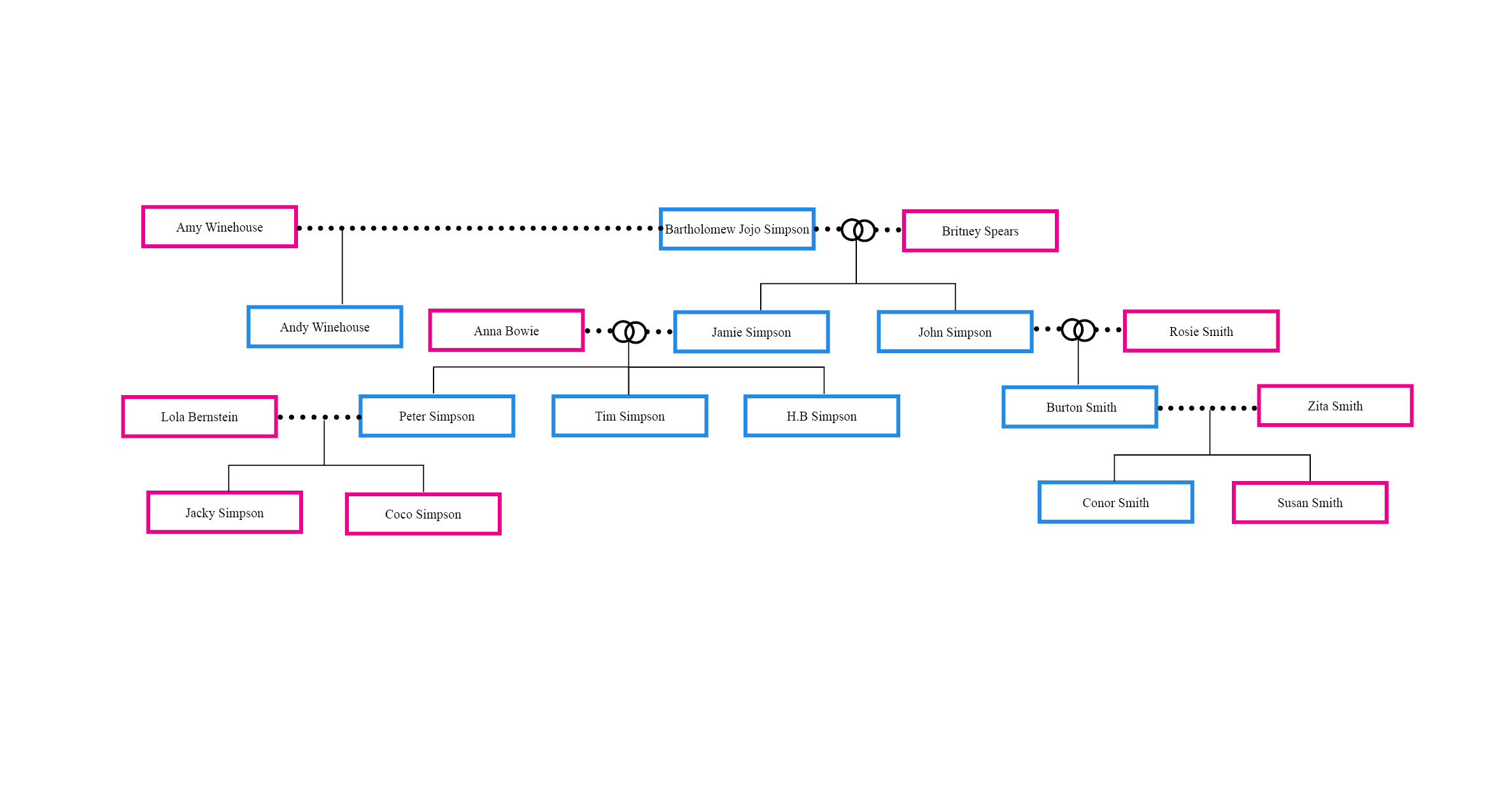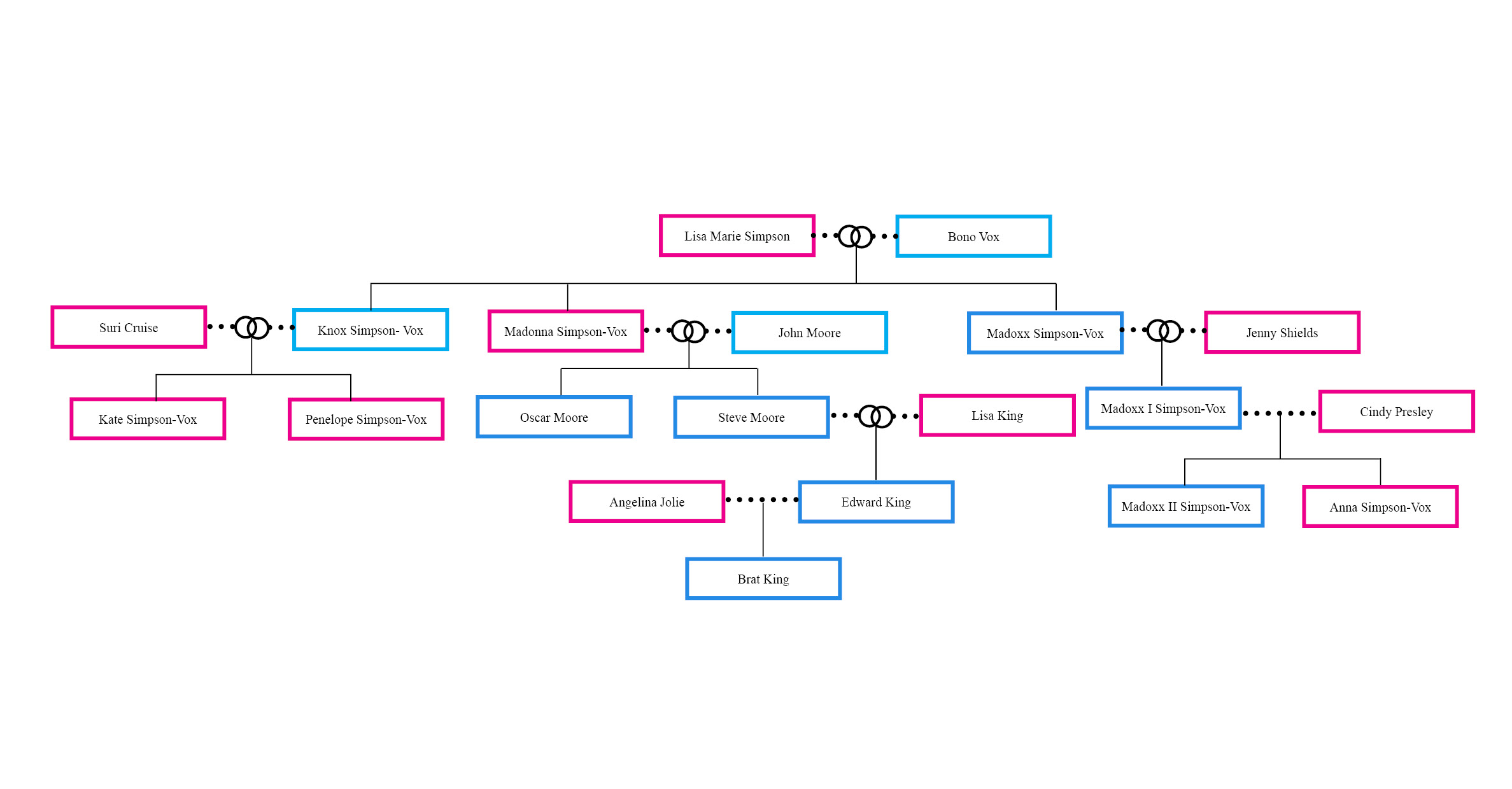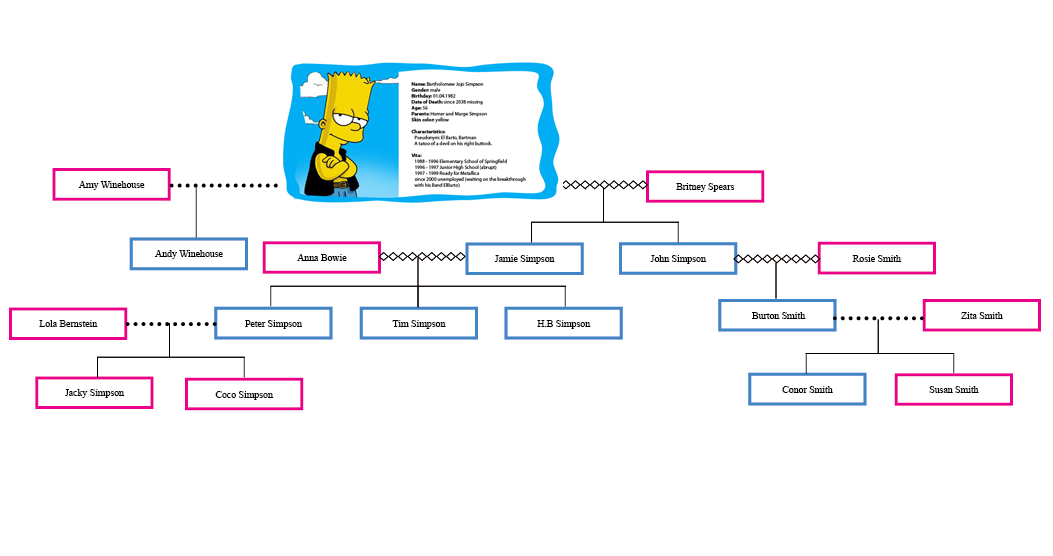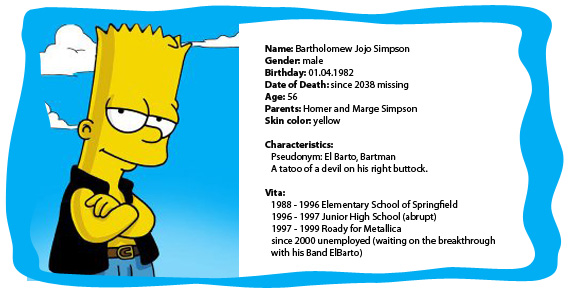Teaching:TUW - UE InfoVis WS 2009/10 - Gruppe 05 - Aufgabe 4: Difference between revisions
No edit summary |
No edit summary |
||
| Line 83: | Line 83: | ||
The family tree gives the onlooker an overview making it easy recognizing the relationship between the individuals. | The family tree gives the onlooker an overview making it easy recognizing the relationship between the individuals. | ||
[[Image:Bart_Stammbaum.jpg|500px|Barts Family Tree]] | [[Image:Bart_Stammbaum.jpg|500px|Barts Family Tree]] | ||
[[Image:Lisa_Stammbaum.jpg|500px|Lisas Family Tree]] | [[Image:Lisa_Stammbaum.jpg|500px|Lisas Family Tree]] | ||
| Line 95: | Line 96: | ||
By selecting multiple datasets (dataset = person) from the family tree, the viewer might switch to the compare view to oppose specific attributes (can be selected by the viewer). | By selecting multiple datasets (dataset = person) from the family tree, the viewer might switch to the compare view to oppose specific attributes (can be selected by the viewer). | ||
[[Image:Compare.jpg|500px|Compare View]] | [[Image:Compare.jpg|500px|Compare View]] | ||
Revision as of 23:29, 7 January 2010
Aufgabenstellung
Zu erstellende Visualisierung
- Stammbaum der Nachkommen von Lisa und Bart Simpson*
...Visualisierung der Nachkommen von Lisa Simpson sowie der Nachkommen von Bart Simpson. Dabei sollen zwei Stammbäume entstehen - einer von Bart und einer von Lisa - die dann miteinander verglichen werden können. Zuerst kommen Lisa und Bart, dann deren Kinder, ihre Enkel, etc. (mind 4 Generationen). Da es noch keine Nachkommen gibt, können diese frei erfunden werden.
Die Visualisierung soll folgende Informationen darstellen:
- Verwandtschaftsverhältnisse (zumindest Eltern-Kinder),
- Unterscheidung zwischen Blutsverwandtschaft und angeheirateten Familienmitgliedern,
- Geburts- und Todestag sowie Lebensdauer von allen Familienmitgliedern,
- wichtige Ereignisse im Leben jedes Familienmitglieds (z.B., Anzeigen, Gefängnisaufenthalte, Schulzeit, Studienzeit, Nobelpreise, Arbeitslosigkeit etc.)
- Zufriedenheit jedes Familienmitglieds (Skala: sehr niedrig - niedrig - mittel - hoch - sehr hoch); kann sich im Laufe des Lebens ändern.
Die Visualisierung soll die interaktive Auseinandersetzung mit den Daten ermöglichen. Verpflichtend: Möglichkeiten zum besseren Vergleich von einzelnen Abschnitten der Stammbäume bzw. Vergleich von Ausschnitten aus Lisas und Barts Stammbäumen. + mind. 2 weitere Interaktionsmöglichkeiten (z.B., Details on Demand, Filteroptionen)
Allgemein:
- Die Daten sollen zur Analyse von Zusammenhängen zwischen Familienverhältnissen, wichtigen Ereignissen und Zufriedenheit visualisiert werden (die Anwendungsgebiets- und Zielgruppenanalyse kann kurz gehalten werden).
- Die bisher erlernten Design-Prinzipien sollen umgesetzt werden z.B.: Optimierung der Data-ink ratio (keine Comics!), visuelle Attribute (Größe, Farbe, Position, etc.) sollen sinnvoll eingesetzt werden (Information darstellen).
- Die Mockups sollten zumindest 1) die beiden Stammbäume im Überblick und 2) eine detaillierte Vergleichsansicht von 2 Teil-Stammbäumen wiedergeben.
- Alle nicht angeführten Daten können frei erfunden werden.
Description of application area, data, user, task and target
Description of Application Area and Given Dataset
Application Area and Dataset Analysis
It is a matter of social visualization, more precisely a family tree visualization. The descendants of Lisa and Bart Simpson will be presented in two family trees - one for Lisa and one for Bart. The visualization is a interactiv chart e.g. a click on a family member show you individually data about this person.
Following information will be display:
- sur- and first name
- relationships (blood relationship, related by marriage, parent-child relationship)
- date of birth/death
- life time of every family member
- gender
- important events (e.g. official announcement, prison stay, school days etc.)
- satisfaction of the family members
Description of Datasets
- The family tree is a hierarchical data structure presented in a graphical form. The starting node in our example is Lisa or Bart. These nodes are also called root nodes. The lower-level node is called ancestor. Sibling nodes share the same parent node. The edge demonstrate the realtionship among people.
- The sur- and first name is a nominal data type.
- The birthday and date of death are ordinal data types.
- The life time (age) is a discrete numerical data type.
- The gender is a nominl data type.
- The important events are nominal data types.
- The satisfaction of a family member is a discrete ordinal data type (e.g. scala between 1 - 4 for very low to very high)
Target Group Analysis
Generally is a family tree for people who may want to know more about their own family relationship. This visualization should be create from every family member. The Simpsons familiy tree is for people who are interested in the animated television sitcom "The Simpsons".
Purpose of Visualization
The visualization must be clearly and structured. It should be possible for the viewer at the first view to distinguish the gender of the people, the relationship among people (parent - child) and the blood realtionship vs. related by marriage. To get more information (e.g. birthday, day of death, school days etc.) about a familiy member, the user click on this person. In the second frame will be detailed all further information.
Concept
The family tree is a interactive visualization.
The family tree gives the onlooker an overview making it easy recognizing the relationship between the individuals.
Moving the mouse over a specific person gives the viewer detailed information about this person.
The detail view contains multiple datasets related to the person’s curriculum vitae.
By selecting multiple datasets (dataset = person) from the family tree, the viewer might switch to the compare view to oppose specific attributes (can be selected by the viewer).




